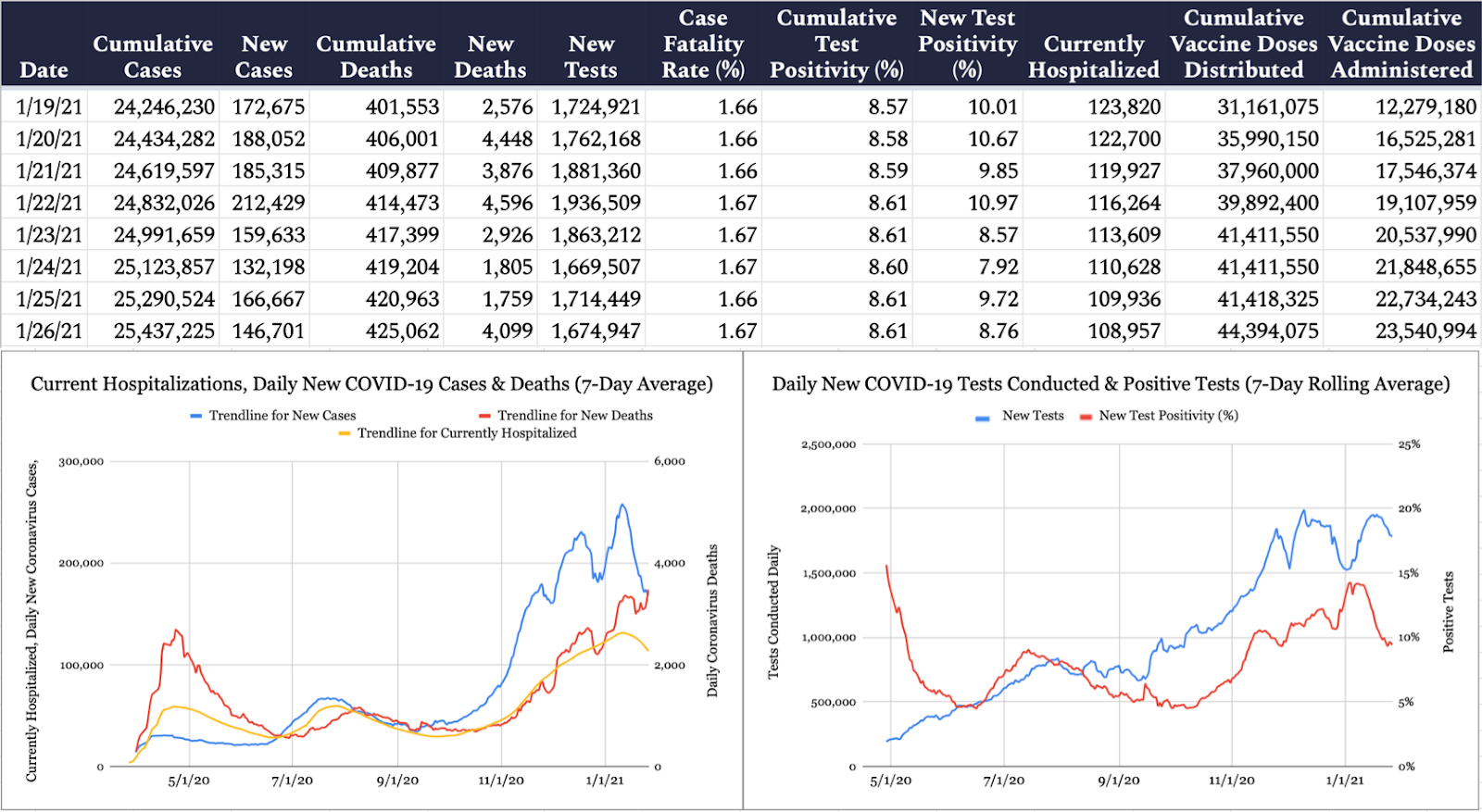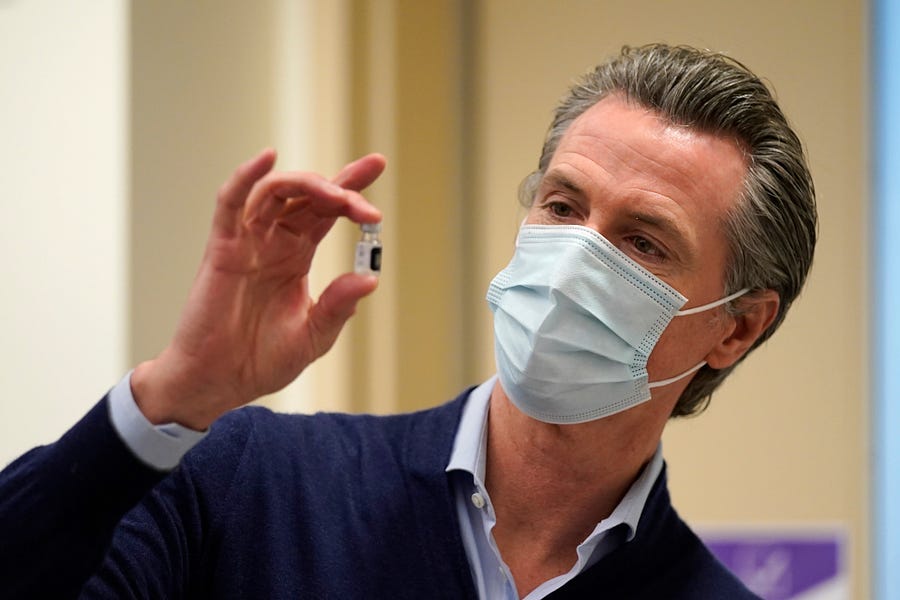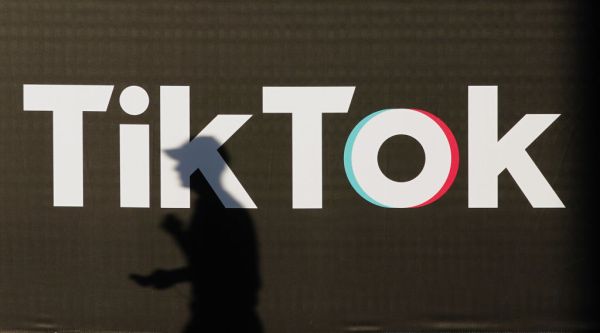Happy Wednesday! Unless you are one of the guys who was angling to get into the Baseball Hall of Fame. Then today is not a happy Wednesday at all.
Quick Hits: Today’s Top Stories
-
President Joe Biden said yesterday his administration is working toward purchasing an additional combined 200 million doses of COVID-19 vaccine from Pfizer and Moderna, which, if secured, would be manufactured and delivered this summer. The 200 million doses would be in addition to the combined 400 million the two companies have pledged to provide the United States.
-
Biden issued a series of executive orders yesterday as a part of his “racial equity agenda.” Among them was an order designed to phase out the Justice Department’s contracts with private prisons, citing the need to “reduce profit-based incentives” for the mass incarceration of people of color. The president also issued a memorandum directing the Department of Housing and Urban Development to examine the federal government’s role in “systematically declining to invest in communities of color and preventing residents of those communities from accessing the same services and resources as their white counterparts.”
-
All but five Senate Republicans—Lisa Murkowski, Mitt Romney, Susan Collins, Ben Sasse, and Pat Toomey—voted against tabling a motion introduced by Sen. Rand Paul dismissing former President Donald Trump’s impeachment trial as unconstitutional. Senate Democrats successfully tabled the motion, but the GOP support Paul’s point of order received is likely a preview of what to expect at next month’s impeachment trial.
-
A federal judge in Texas issued a temporary restraining order barring the Biden administration from enforcing its 100-day deportation moratorium, saying that the administration had yet “to provide any concrete, reasonable justification for a 100-day pause on deportations.” The Department of Justice did, however, officially rescind a memo that instituted the Trump administration’s “zero tolerance” U.S.-Mexico border policy that resulted in thousands of family separations. The move was largely symbolic, as President Trump had issued an executive order in June 2018 ending his administration’s family separation policy.
-
The Senate voted 78-22 on Tuesday to confirm Antony Blinken as Biden’s new secretary of state.
-
Biden on Tuesday spoke to Russian President Vladimir Putin for the first time since he assumed office last week. According to a White House readout of the call, the two spoke about extending the New START Treaty, the SolarWinds hack, Ukrainian sovereignty, and the poisoning of Alexei Navalny.
-
Maj. Gen. William Walker—the commanding general of the District of Columbia National Guard—told the Washington Post that the Pentagon restricted his ability to respond without higher-level authorization ahead of the January 6 attack on the U.S. Capitol.
-
Several thousand D.C. National Guard troops will remain deployed through March “in continued support of District and Federal civil authorities during anticipated First Amendment demonstrations and Civil Disturbance in the District of Columbia.”
-
The United States confirmed 146,701 new cases of COVID-19 yesterday per the Johns Hopkins University COVID-19 Dashboard, with 8.8 percent of the 1,674,947 tests reported coming back positive. An additional 4,099 deaths were attributed to the virus on Tuesday, bringing the pandemic’s American death toll to 425,062. According to the COVID Tracking Project, 108,957 Americans are currently hospitalized with COVID-19. According to the Centers for Disease Control, 44,394,075 COVID-19 vaccine doses have been distributed nationwide, and 23,540,994 have been administered.

States Seesaw on Pandemic Restrictions
At the outset of the coronavirus pandemic last March, Tomas Pueyo wrote a widely read piece outlining how governments around the world could balance public health and economic viability: The Hammer (a few weeks of mandatory total lockdown), followed by the Dance (limited restrictions on activity that loosen or tighten based on virus prevalence, until the population is vaccinated). The United States’ execution of this model has been patchwork and clunky, but it’s more or less the path most states have tried to follow.
For most Americans, the Hammer period ended somewhere between mid-May and early June, depending upon where they lived. Then came the Dance. As the virus whipped across the Sun Belt in the summer, for example, states like Texas and Florida temporarily closed bars again and placed some restrictions on dining. Governors in much of the Midwest adjusted public health guidelines in the fall to deal with a surge in the virus. For many states on the coasts that were hit hard by the virus early on, December and January have been particularly difficult.
The restrictions did not always make gallons of sense. New Jersey Gov. Phil Murphy, for example, announced in November that indoor dining could continue in the state—but only until 10 p.m. The Supreme Court struck down Gov. Andrew Cuomo’s attendance limits on religious services. California Gov. Gavin Newsom banned outdoor dining in December, despite a paucity of evidence showing the activity to be dangerous and parts of California actually being warm enough to enjoy it. And then there’s the whole “keeping schools closed despite study after study finding in-person learning does not contribute to virus spread if appropriate precautions are taken” thing.
But with the number of new cases and hospitalizations falling in recent days, even governors and mayors who have proven themselves most heavy-handed with coronavirus restrictions are beginning to ease up. Restaurants in Michigan will be allowed to reopen at 25 percent capacity starting February 1. In Illinois, it happened over the weekend. California Gov. Gavin Newsom canceled the state’s stay-at-home order this week, and Gov. Andrew Cuomo in New York said Monday that “we can start to adjust that valve and start to open up more economic activity and reduce some of the restrictions.”
What’s driving this shift? Some local officials believe repealing restrictions on certain activities will actually help contain the spread of the virus. “If we have people and give them an outlet for entertainment in the restaurant space, in the bar space, we have much more of an opportunity, in my view, to be able to regulate and control that environment,” Chicago Mayor Lori Lightfoot said this month, advocating for the reopening of restaurants and bars. She had opposed Gov. J.B. Pritzker’s restricting indoor dining in the fall. “People are engaging in risky behavior that is not only putting themselves at risk, but putting their families, their co-workers, and other ones at risk. Let’s bring it out of the shadows. Let’s allow them to have some recreation in restaurants, in bars, where we can actually work with responsible owners and managers to regulate and protect people from COVID-19.”
Others have begun prioritizing the economic effects of the restrictions. “We simply cannot stay closed until the vaccine hits critical mass. The cost is too high,” Cuomo said January 11, echoing a line of argument of which he was highly critical earlier in the pandemic. “We will have nothing left to open. We must reopen the economy, but we must do it smartly and safely.”
And some officials are citing improving trends in the data. Newsom on Monday, for example, pointed to a 20 percent decrease in COVID-19 hospitalizations in the state over the past two weeks. “Projecting four weeks forward,” he told reporters, “with a significant decline in the case rates, positivity rates, we are anticipating … still more decline in hospitalizations and more declines in ICUs. And that’s why we are lifting that stay-at-home order effective immediately.”
When Newsom issued the state’s most recent stay-at-home order in early December, he said it would apply to “any Regions for which [ICU bed] capacity is less than 15%.” According to data from the Department of Health and Human Services, however, ICU bed capacity is currently only 11 percent statewide, and between 5 and 7 percent in California’s most populous counties. Newsom attempted to explain the discrepancy by describing ICU capacity as a “lagging indicator,” thus necessitating a reliance on four-week projections. “What’s happening with positivity rates, case rates, community spread really is the forecast that gives us confidence on where we will land in a number of weeks,” he said.
Newsom is under heavy political pressure at the moment, as leaders of an effort to recall him say they have collected 1.2 million signatures of the 1.5 million necessary by March 17 to force a vote. The effort has been fueled in large part by Newsom’s stringent coronavirus restrictions, as well as his blatant hypocrisy flouting his own COVID protocols by eating indoors with lobbyists in November.
Asked if his decision to lift the stay-at-home order had anything to do with his own political situation, Newsom got defensive. “That’s just complete utter nonsense, so let’s just dispense with that,” he said. “Fundamental foundationally nonsense.”
Even as many Democratic-led states shed some of their more onerous restrictions, one area continues to lag behind: schools. As we’ve written about in the past, in-person schooling—with the proper precautions—is nowhere near the driver of coronavirus spread that bars and restaurants are. On Tuesday, a trio of Centers for Disease Control (CDC) officials argued as much in a new paper.
“The preponderance of available evidence from the fall school semester has been reassuring insofar as the type of rapid spread that was frequently observed in congregate living facilities or high-density worksites has not been reported in education settings in schools,” the officials write.
Yet millions of students around the country continue to not have an in-person option, as powerful teacher’s unions stymie reopening plans. The Chicago Teachers Union voted over the weekend to defy an order from school officials to return to in-person learning this week, saying “the issue is [Chicago Public Schools’] current unpreparedness for a return to in-person instruction, and the clear and present danger that poses to the health of our families and school communities.” In Fairfax, Virginia, the president of the education association is now calling for any full time* return to in-person learning to be delayed until all students receive both doses of a COVID-19 vaccine, not just teachers. The vaccine is currently only authorized for individuals over the age of 16.
President Biden has advocated for a return to in-person learning, calling for $175 billion in congressional funding to reopen schools, and issuing an executive order on his second day in office making clear “it is the policy of [his] Administration to provide support to help create the conditions for safe, in-person learning as quickly as possible.”
White House Chief of Staff Ron Klain discussed school reopenings on CNN last night. When asked why many public schools across the country remain closed while private ones are open, Klain gave a simple answer. “Money,” he said. “President Biden has sent a plan to Congress that will make sure that a majority of our schools can be open within 100 days. We need Congress to pass that plan so we can do the kinds of things you need to do so that the schools can be safe, so the teachers can be safe, so the students can be safe. Sadly, it costs money.”
“I don’t think the unions are overruling studies,” he continued. “I think what you’re seeing is schools that haven’t made the investments to keep the students safe.”
Worth Your Time
-
In a Washington Post op-ed, Michael Gerson, former speechwriter for George W. Bush, urges Americans to fully process and learn from the events of January 6. Unfortunately, he writes, “collective amnesia” seems to have set in among Republican politicians, ostensibly in the name of national unity. “If the Capitol attack is not fully and completely repudiated, then ‘January 6!’ will be strengthened as a radical rallying cry. And an un-convicted Trump would do his best to ensure it,” Gerson writes. “By convicting Trump, Senate Republicans would be saying that the insurrection was something very different: the last gasp of a dying presidency, a uniformly condemned outbreak of hatred and an act of eternal dishonor.”
-
Less than a week into his presidency, President Biden has already built upon the Trump administration’s “worst economic thinking,” Kevin Williamson argues in a piece for National Review. Biden’s “Buy American” executive order, he argues, is nothing more than “corporate welfare in patriotic drag.” You don’t “make the country as a whole better off by overcharging Peter to overpay Paul,” Williamson concludes. “What you do is make everybody worse off by inhibiting the normal functioning of markets, in which the division of labor and comparative advantage work together to make the world more prosperous by making the most of the necessarily limited resources we have.”
-
As mentioned above, Fairfax County teachers are pushing to delay school reopenings until students have been inoculated. So why have teachers been prioritized to receive the vaccine themselves? About 5,000 teachers have received a first dose and 22,000 more are slated to get the jab soon. “The simple truth is that the Fairfax school system wants the benefits of heroism without taking a heroic action,” writes Fairfax County parent Rory Cooper. “The excuses pile up faster than the half-inch of snow that typically shuts down school operations.”
Presented Without Comment
Also Presented Without Comment
Also Also Presented Without Comment
Toeing the Company Line
-
For yesterday’s edition of The Sweep, Sarah spoke to Doug Kronaizl about pivot counties in both 2016 and 2020. Plus, a contribution from special guest Chris Stirewalt!
-
RealClearPolitics editor A.B. Stoddard joined Jonah on the latest episode of The Remnant to chat about Senate Republicans’ path forward in a post-Trump era. What external pressures—political and personal—might inhibit GOP lawmakers from following their conscience? Are there legitimate legal and logistical arguments to be made by Republicans in opposition to convicting the president?
Let Us Know
Once (knock on wood) the pandemic is over, what do you think we are going to look back on as having been the biggest mistakes we made in responding to it?
Reporting by Declan Garvey (@declanpgarvey), Andrew Egger (@EggerDC), Haley Byrd Wilt (@byrdinator), Audrey Fahlberg (@FahlOutBerg), Charlotte Lawson (@charlotteUVA), and Steve Hayes (@stephenfhayes).
Correction, January 27, 2021: A previous edition of this newsletter partially mischaracterized the Fairfax Education Association’s vaccination request. The Association’s president, Kimberly Adams, said that “all students need to be vaccinated before in-person instruction resumes full time,” but left open the possibility of “hybrid learning options” prior to then.







Please note that we at The Dispatch hold ourselves, our work, and our commenters to a higher standard than other places on the internet. We welcome comments that foster genuine debate or discussion—including comments critical of us or our work—but responses that include ad hominem attacks on fellow Dispatch members or are intended to stoke fear and anger may be moderated.
With your membership, you only have the ability to comment on The Morning Dispatch articles. Consider upgrading to join the conversation everywhere.